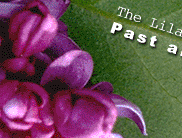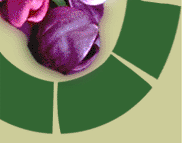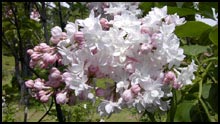





 | ||||||||
|
||||||||
 | ||||||||
| While the florets of single French hybrids have four lobes, double French hybrids have either additional lobes or two to four corollas inside each other. Except for one mutated plant found in a Flemish garden before 1843, double lilacs result from the work of plant breeders. | ||||||||||||||||||
|
From generation to generation In the early days of double lilacs, breeders were challenged to expand the colour range, as well as floret and flower shape. Recent introductions are more complex in their colour and form. Compare 'Belle de Nancy', an 1891 Lemoine introduction, with its offspring 'Krasavitsa Moskvy' (Beauty of Moscow), introduced in 1963 by Russian breeder, Leonid Kolesnikov. |
Seeing double 'Azurea Plena' was a spontaneous mutation. Its flowers were small, deformed and did not produce pollen. French lilac breeder, Victor Lemoine, painstakingly crossed this plant with the best single lilacs he could find, including 'Ville de Troyes'. The work required fine eyesight and nimble fingers, and Victor’s wife Marie actually made most of the crosses. 'Lemoinei' was selected from the first seeds produced — it became the first hybridized double French lilac, creating a sensation when introduced at the Paris World Exposition in 1878. Among the nursery’s later introductions were 'Mme. Lemoine' and 'Victor Lemoine', as well as 'Charles Joly'. Ease of propagation, disease resistance and richly coloured flowers have made it one of the most popular lilacs in the world. |
|||||||||||||||||
|
||||||||||||||||||
 Introduction
Introduction
